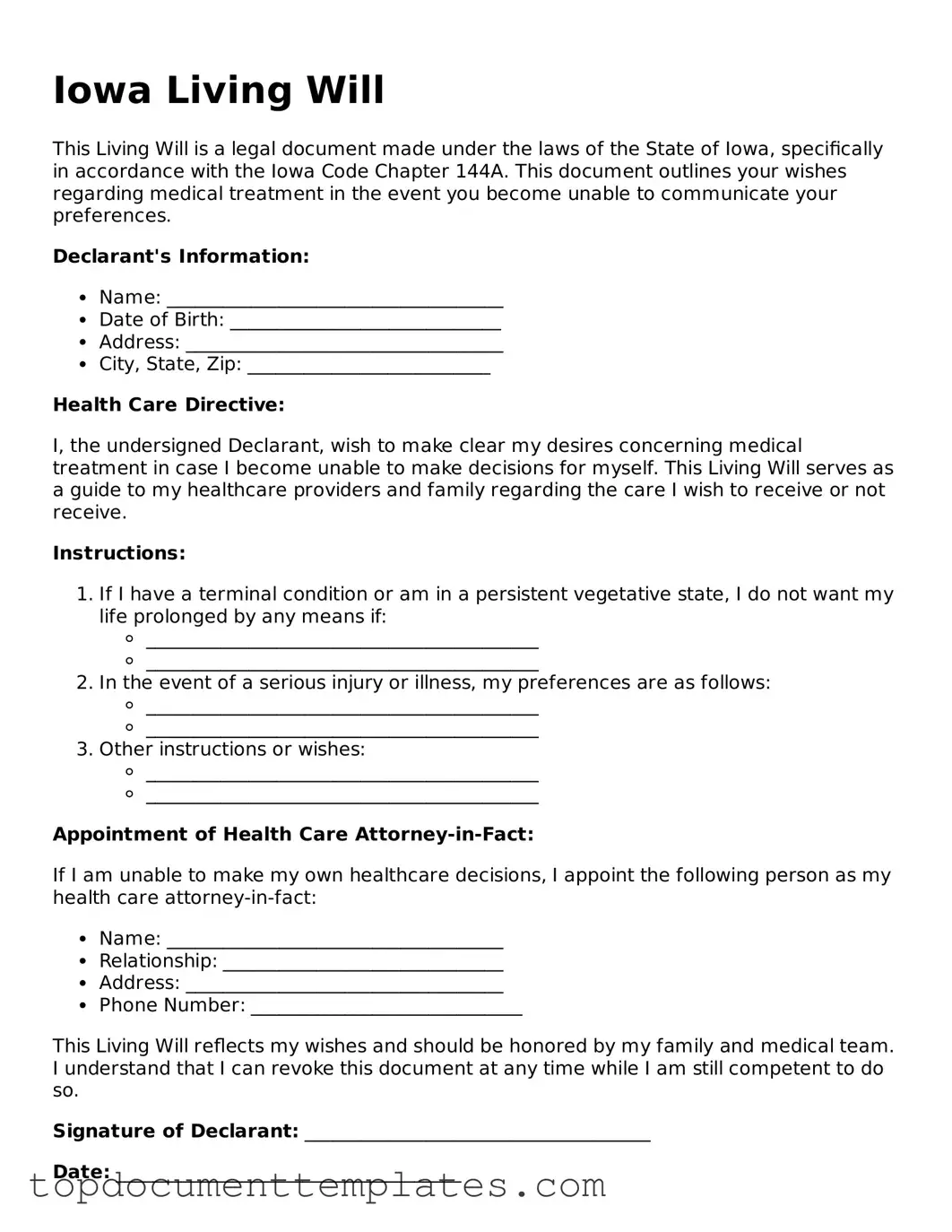Valid Living Will Form for Iowa State
A Living Will is a legal document that outlines your preferences for medical treatment in the event that you become unable to communicate your wishes. This form helps ensure that your healthcare decisions align with your values and desires, particularly regarding life-sustaining treatments. If you're ready to express your wishes, consider filling out the Iowa Living Will form by clicking the button below.
Open This Form
